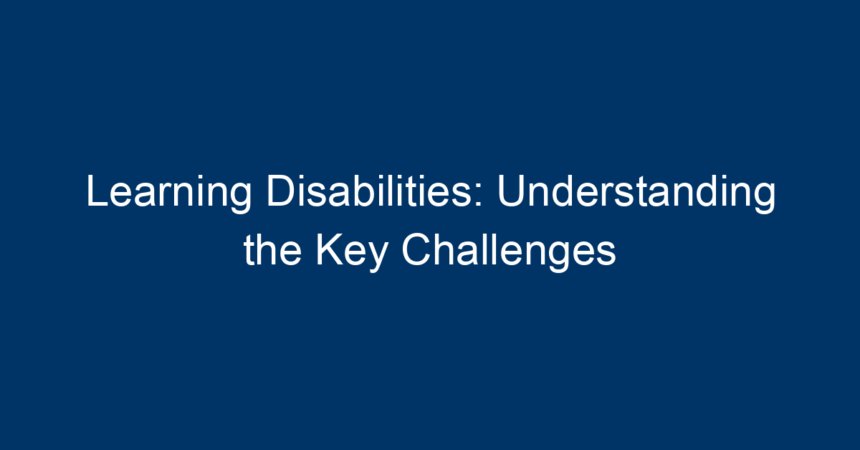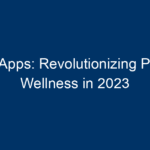Learning disabilities affect millions of individuals across the globe, creating barriers to their academic success and social interactions. Understanding the key challenges associated with these disabilities not only fosters empathy but also equips parents, educators, and peers with the knowledge to create a supportive environment. In this comprehensive guide, we will explore the types of learning disabilities, their symptoms, the challenges they pose, and strategies to support those affected.
What Are Learning Disabilities?
Learning disabilities are neurologically-based processing problems that can interfere with learning in specific areas such as reading, writing, and mathematics. Unlike general learning difficulties, learning disabilities can impact an individual’s ability to interpret information, communicate effectively, and perform tasks that adults and peers may find manageable.
According to the National Center for Learning Disabilities, one in five children in the U.S. has a learning disability. These disabilities can be lifelong, making early identification and intervention crucial for success.
Types of Learning Disabilities
-
Dyslexia: A common reading disability, dyslexia affects an individual’s ability to process written information. People with dyslexia often struggle with decoding words, making reading a laborious task.
-
Dysgraphia: This condition impairs handwriting and fine motor skills. Individuals with dysgraphia may struggle with the physical act of writing or have difficulty organizing thoughts on paper.
-
Dyscalculia: Often referred to as "math dyslexia," dyscalculia impacts an individual’s ability to understand numbers and perform mathematical operations. This can lead to anxiety and low self-esteem concerning math-related tasks.
-
Nonverbal Learning Disabilities (NVLD): NVLD can affect spatial awareness, understanding social cues, and reading nonverbal communication. Individuals may excel in verbal skills but struggle with physical interactions and spatial tasks.
- Auditory Processing Disorder (APD): Individuals with APD have difficulty making sense of and responding to sounds, which can impact their ability to process verbal instructions or comprehend spoken language.
Symptoms and Early Warning Signs
Recognizing the symptoms of learning disabilities early can lead to prompt diagnosis and intervention. Here are some common signs to watch for:
-
Difficulty Reading: Frequent mispronunciation of words, skipping lines while reading, or an inability to understand the content properly.
-
Poor Handwriting: Messy, illegible writing, trouble copying information from a board, or reluctance to write assignments.
-
Math Anxiety: Difficulty understanding number concepts or consistently getting math problems wrong, even when the correct methods have been taught.
-
Social Challenges: Trouble understanding social cues, difficulty maintaining friendships, or issues with group work.
- Listening Issues: Difficulty following multi-step verbal instructions or misunderstanding what is being asked verbally.
The Key Challenges Faced by Individuals with Learning Disabilities
1. Academic Struggles
The most significant impact of learning disabilities manifests in academic performance. Students may face challenges in specific subjects, leading to frustration, anxiety, and a negative self-image. Traditional teaching methods often do not cater to their learning styles, exacerbating their struggles.
2. Emotional and Social Difficulties
Many individuals with learning disabilities experience feelings of isolation and inadequacy. Frequent setbacks in learning can lead to anxiety, depression, or behavioral issues. These emotional challenges may hinder their ability to form relationships and engage in social situations, further leading to a cycle of isolation.
3. Misunderstanding and Stigma
A lack of understanding about learning disabilities can lead to stigma. Peers, teachers, and even family members may not recognize that a student’s difficulties aren’t a reflection of their intelligence but rather a different way of processing information. This can lead to unwarranted negative stereotypes, discrimination, and bullying.
4. Limited Access to Resources
Access to special education services and resources varies significantly. In many cases, schools are under-resourced or lack adequately trained staff to address diverse learning needs effectively. Parents must navigate complex educational laws and services, which can be daunting without proper guidance.
Support Strategies for Individuals with Learning Disabilities
1. Early Diagnosis and Intervention
One of the most effective ways to support individuals with learning disabilities is through early diagnosis and tailored intervention. Assessments can identify specific needs, allowing for customized education plans. Early intervention can drastically improve outcomes in academic performance and emotional well-being.
2. Specialized Teaching Methods
Teachers can employ a range of specialized teaching methods tailored to the unique learning needs of each student. These may include:
-
Multisensory Learning: Engaging multiple senses can help those with learning disabilities absorb information more effectively. Techniques like using visual aids, hands-on activities, and auditory resources make learning more accessible.
-
Structured Learning Environments: Clear routines and structured environments help individuals focus better and understand expectations.
- Assistive Technology: Tools like speech-to-text software, audiobooks, and educational apps can aid in learning, focusing on the individual’s strengths.
3. Building Emotional Resilience
Emotional support is crucial for individuals with learning disabilities. Parents, educators, and therapists can work together to foster resilience by:
-
Encouraging Open Discussion: Creating a safe space for individuals to express their feelings and frustrations can lead to greater emotional awareness and control.
-
Setting Realistic Goals: Establishing achievable goals can help build confidence and a sense of accomplishment.
- Celebrating Achievements: Recognizing both big and small successes can help shift the focus from difficulties to strengths.
4. Promoting Social Skills
To combat social challenges, targeted social skills training can help individuals learn how to navigate social situations effectively. Role-playing, social stories, and group activities can assist in building relationships and improving communication skills.
Conclusion: Moving Toward Understanding and Inclusion
In conclusion, understanding learning disabilities is vital to fostering an inclusive society where everyone has the opportunity to succeed. By recognizing the challenges faced by individuals with learning disabilities, we can better define the support systems needed to empower them.
Actionable insights include:
-
Educating Yourself and Others: Knowledge is power. Learning about various learning disabilities and their challenges can help reduce stigma and foster a more supportive community.
-
Advocating for Resources: Engaging with schools and policymakers to advocate for necessary resources and programs can improve educational outcomes for those affected.
- Creating a Supportive Environment: Be intentional about creating an inclusive environment, whether at home, school, or in public spaces. Actions as simple as promoting kindness and understanding can make a profound difference.
Learning disabilities present unique challenges, but with the right strategies and support, individuals can thrive academically, socially, and emotionally. Together, we can create a world that values diversity in learning and fosters success for all.




